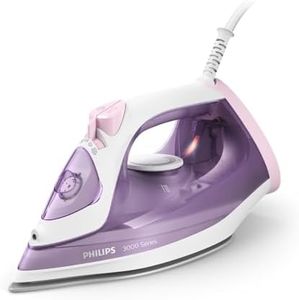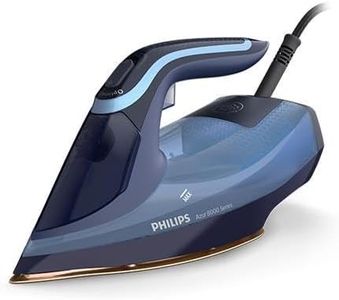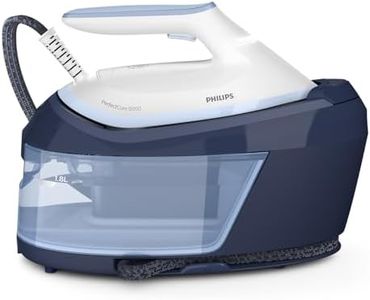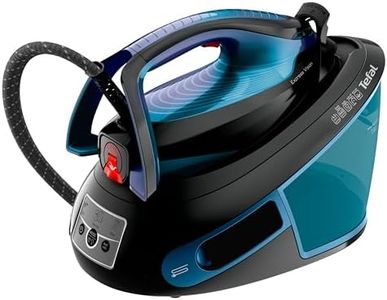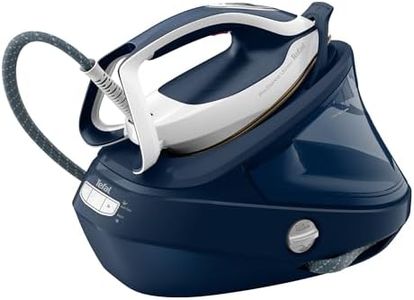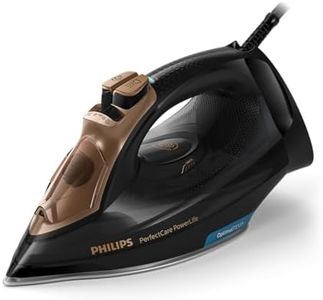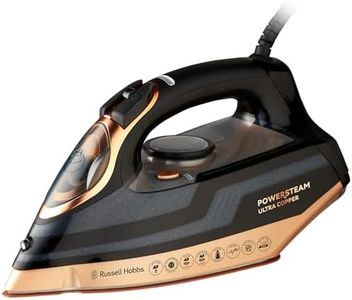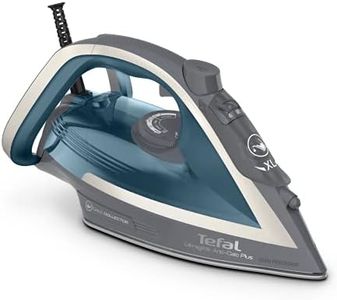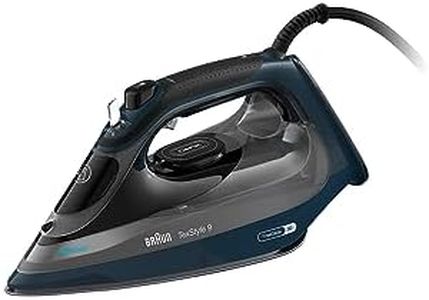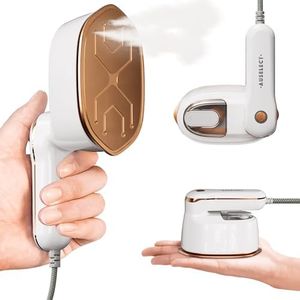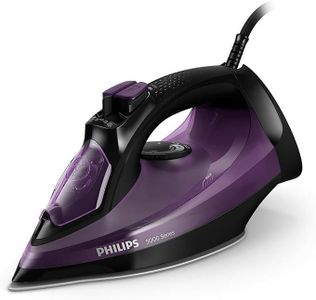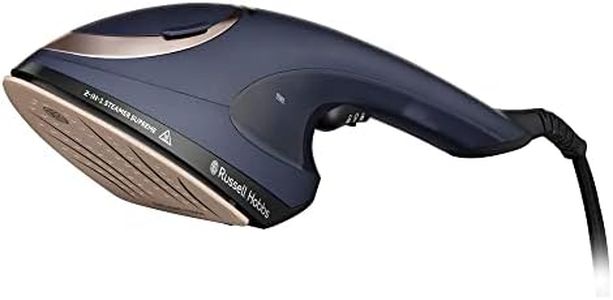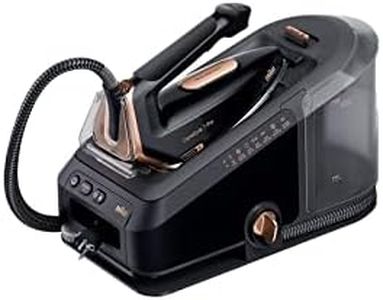We Use CookiesWe use cookies to enhance the security, performance,
functionality and for analytical and promotional activities. By continuing to browse this site you
are agreeing to our privacy policy
10 Best Steam Irons
From leading brands and best sellers available on the web.By clicking on a link to a third party's website, log data is shared with that third party.
Buying Guide for the Best Steam Irons
Choosing the right steam iron may seem daunting, but it really comes down to thinking about how often you iron, what types of clothes or fabrics you mostly handle, and how comfortable you want the process to be. Rather than chasing the most powerful or high-tech option, focus on features that match your ironing volume and fabric types. A well-matched iron should make ironing easier and faster, offer safety and durability, and help prevent damage to your clothes.Steam OutputSteam output measures how much steam the iron releases through its soleplate per minute. More steam helps to relax fabric fibers, making it easier to remove wrinkles quickly. Irons with lower steam output are usually fine for occasional or light ironing, while higher steam output is helpful for heavy users, frequent ironing, or thicker fabrics like denim and linen. If you mostly iron shirts, a medium output is usually enough. If you deal with stubborn wrinkles or large piles of laundry, look for higher steam performance.
Soleplate MaterialThe soleplate is the flat, heated part of the iron that glides over fabrics. Common materials include stainless steel, ceramic, and non-stick coatings. Stainless steel provides smooth glide and durability, making it a reliable all-rounder. Ceramic heats evenly and is gentle on delicate fabrics, while non-stick coatings prevent sticking, especially helpful with synthetic materials. Choose stainless steel for mixed or heavy use, ceramic for delicate and colored fabrics, and non-stick if you often iron synthetics or want easy cleaning.
WattageWattage indicates how quickly and powerfully the iron can heat up and generate steam. Higher wattage irons heat up faster and produce stronger steam, which is efficient for frequent or intensive ironing. Moderate wattage is sufficient for most regular household ironing jobs, while lower wattage is best suited for travel irons or very occasional use. If you value speed and efficiency, a higher wattage is better; if patience and small loads are more your style, moderate is fine.
Water Tank CapacityThis refers to how much water the iron can hold, which affects how long you can steam before needing to refill. A larger tank means fewer interruptions but can make the iron heavier. Compact tanks keep things light and easy to handle but need frequent refills. For long or demanding ironing sessions, a bigger tank is convenient; for short or infrequent tasks, a small tank keeps things manageable.
Auto Shut-offAuto shut-off is a safety feature that turns the iron off if left unused for a certain time, either flat or upright. This helps prevent accidental burns, fires, or fabric damage. It's especially valuable if you're likely to get distracted or have other people or pets around. If safety is a concern in your home, or you tend to multitask, prioritize this feature.
Weight and ErgonomicsThe weight and design of the handle impact comfort, especially for longer ironing sessions. A heavier iron can help press out wrinkles with less effort but may cause fatigue. Lighter irons are easier to maneuver and better for delicate fabrics, travel, or users with limited strength. Check for comfortable, non-slip handles. Pick a heavy iron for frequent use or tough fabrics, and go lighter for occasional or shorter sessions.
Variable Temperature and Steam ControlsThese controls let you adjust the heat and steam output for different types of fabrics. Being able to dial down heat for silk or ramp it up for cotton improves ironing results and prevents accidentally burning garments. This is essential if you have a varied wardrobe or iron a mix of delicate and sturdy fabrics.
